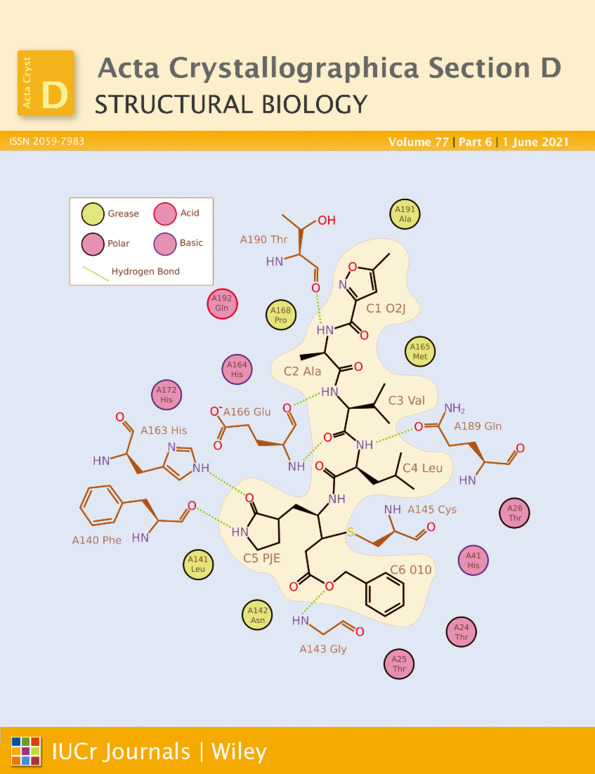Structure of human factor VIIa–soluble tissue factor with calcium, magnesium and rubidium
Abstract
Coagulation factor VIIa (FVIIa) consists of a γ-carboxyglutamic acid (GLA) domain, two epidermal growth factor-like (EGF) domains and a protease domain. FVIIa binds three Mg2+ ions and four Ca2+ ions in the GLA domain, one Ca2+ ion in the EGF1 domain and one Ca2+ ion in the protease domain. Further, FVIIa contains an Na+ site in the protease domain. Since Na+ and water share the same number of electrons, Na+ sites in proteins are difficult to distinguish from waters in X-ray structures. Here, to verify the Na+ site in FVIIa, the structure of the FVIIa–soluble tissue factor (TF) complex was solved at 1.8 Å resolution containing Mg2+, Ca2+ and Rb+ ions. In this structure, Rb+ replaced two Ca2+ sites in the GLA domain and occupied three non-metal sites in the protease domain. However, Rb+ was not detected at the expected Na+ site. In kinetic experiments, Na+ increased the amidolytic activity of FVIIa towards the synthetic substrate S-2288 (H-d-Ile-Pro-Arg-p-nitroanilide) by ∼20-fold; however, in the presence of Ca2+, Na+ had a negligible effect. Ca2+ increased the hydrolytic activity of FVIIa towards S-2288 by ∼60-fold in the absence of Na+ and by ∼82-fold in the presence of Na+. In molecular-dynamics simulations, Na+ stabilized the two Na+-binding loops (the 184-loop and 220-loop) and the TF-binding region spanning residues 163–180. Ca2+ stabilized the Ca2+-binding loop (the 70-loop) and Na+-binding loops but not the TF-binding region. Na+ and Ca2+ together stabilized both the Na+-binding and Ca2+-binding loops and the TF-binding region. Previously, Rb+ has been used to define the Na+ site in thrombin; however, it was unsuccessful in detecting the Na+ site in FVIIa. A conceivable explanation for this observation is provided.




